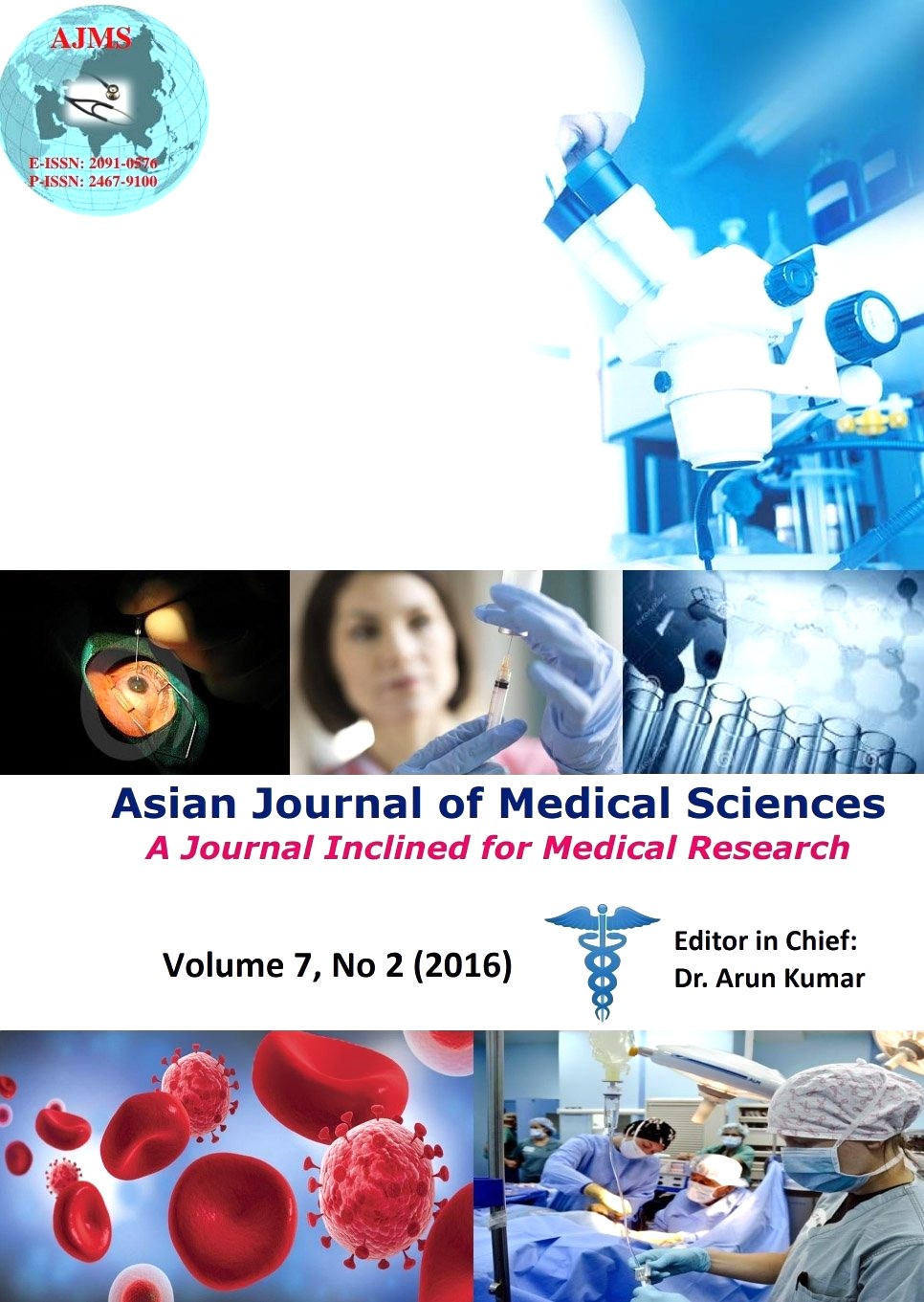Etiology of bloodstream infection and antibiotic susceptibility pattern of the isolates
Keywords:
Bloodstream infections, Escherichia coli, Salmonella Typhi, Salmonella Paratyphi A, Klebsiella pneumoniae, CoNS.Abstract
Background: Bloodstream infection (BSI) is a signifi cant cause of morbidity and mortality. In Nepal, very few studies on BSIs have restricted the understanding of their cause, prevention and treatment. This cross-sectional study was conducted to isolate BSIs causing pathogens and determine their antibiotic susceptibility pattern in patients visiting Kathmandu ModelHospital during December 2012 to May 2013.
Materials and Methods: Standard laboratory procedure was used to screen, isolate and identify the bacteria from 1,205 patients. The antibiotic susceptibility pattern (AST) was analyzed by modifi ed Kirby Bauer technique and data were analyzed using SPSS version-16.
Results: Out of 1,205 blood samples, 186 (15.4 %) were culture positive. The most common bacteria isolated were: Salmonella spp., Escherichiacoli, Klebsiella pneumoniae and CoNS. Gram-negative bacteria were the predominant causes of BSIs. Salmonella Typhi was isolated in 71 % cases of bloodstream infection followed by Salmonella Paratyphi A in 16 %, Escherichia coli in 5.3 % and Klebsiella pneumonia in 0.5 %. The gram-positive organism responsible for causing BSI was coagulase-negative staphylococcus in 7 % cases. There was no significant association between bacteremia and gender of the patients. During ASTs, Gram-negative bacteria were sensitive to Chloramphenicol with only 0.5 % resistivity. Salmonella Typhi (85.6 % of isolates) showed resistance to Nalidixic acid. Gram-positive bacteria showed 100 % sensitivity towards Chloramphenicol and Gentamicin and were least sensitive to Amoxicillin.
Conclusion: Salmonella spp., was major cause of BSIs. Increase in antibiotic resistivity for BSI causing pathogens has necessitated continuous monitoring of the susceptibility of organisms towards antibiotics.
Asian Journal of Medical Sciences Vol.7(2) 2015 71-75
Downloads
Downloads
Published
How to Cite
Issue
Section
License
Authors who publish with this journal agree to the following terms:
- The journal holds copyright and publishes the work under a Creative Commons CC-BY-NC license that permits use, distribution and reprduction in any medium, provided the original work is properly cited and is not used for commercial purposes. The journal should be recognised as the original publisher of this work.
- Authors are able to enter into separate, additional contractual arrangements for the non-exclusive distribution of the journal's published version of the work (e.g., post it to an institutional repository or publish it in a book), with an acknowledgement of its initial publication in this journal.
- Authors are permitted and encouraged to post their work online (e.g., in institutional repositories or on their website) prior to and during the submission process, as it can lead to productive exchanges, as well as earlier and greater citation of published work (See The Effect of Open Access).




